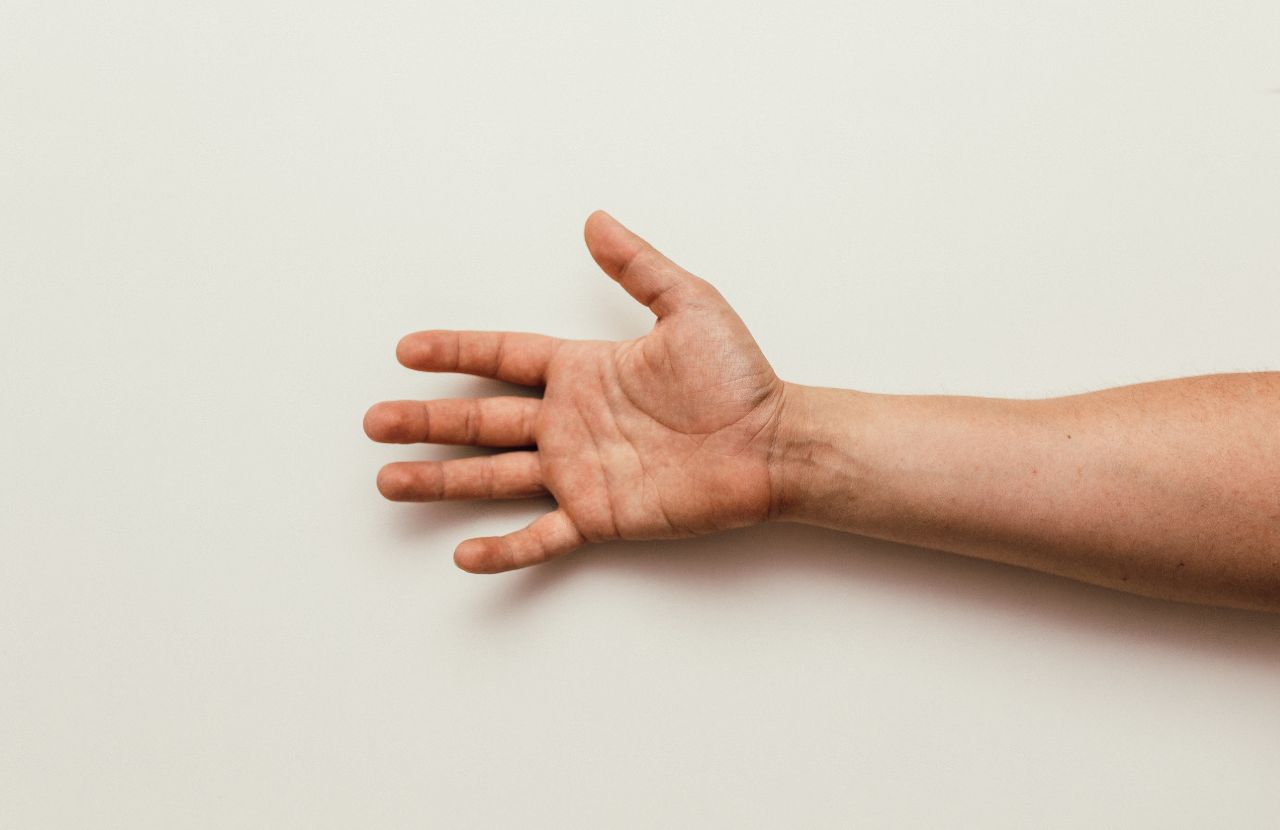
Work related upper limb disorders (WRULDs) affected a shocking 175,000 of British workers in 2021/22, according to the latest HSE statistics. Upper limb disorders (ULDs) are musculoskeletal conditions which affect the elbow, hand, forearm, shoulder, or wrist and may have a serious, long-term impact on someone’s life.
In 2021/22 alone, approximately 7.3 million working days were lost due to musculoskeletal disorders, costing UK businesses and the NHS billions of pounds.
But upper limb disorders can be avoided by making simple changes to job design, the workplace environment and how employees use display screen equipment.
Here we talk about what causes upper limb disorders and how you can prevent them.
What are an employer’s legal responsibilities?
The Health and Safety at Work Act 1974 and the Management of Health and Safety at Work Regulations 1999 place a general duty of care on employers to protect the health, safety and wellbeing of their employees.
Employers must also comply with the Display Screen Equipment Regulations 1992 which have been revised under the Health and Safety (Miscellaneous Amendments) Regulations 2002 (L26). These regulations aim to prevent musculoskeletal disorders, eyestrain and other issues associated with the daily or prolonged use of display screen equipment and related devices.
There is also a legal duty for employers to report certain cases of WRULDs, such as carpal tunnel syndrome, hand-arm vibration syndrome and tendonitis under the RIDDOR Regulations.
What are an employees responsibilities?
The Health and Safety at Work Act 1974 and Management of Health and Safety at Work Regulations 1999 places a duty on employees to protect their own health and safety and that of other people who may be affected by their actions.
Employees must also report short comings in the health and safety arrangements that are in place which may include accidents and ill health. They must also cooperate with their employer to enable them to comply with health and safety legislation.
What causes work related upper limb disorders (WRULDs)?
A work-related upper limb disorder can be caused by:
- Prolonged, repetitive work. Jobs that require employees to perform the same hand or arm movements repeatedly over an extended period can lead to upper limb disorders. For example, typing or using a mouse.
- Awkward working postures. Working in awkward, uncomfortable positions that strain the upper limbs can contribute to these disorders. This can include tasks that require holding a mobile device, bending, twisting, or reaching for extended periods.
- Sustained or excessive force. Applying excessive force while performing tasks, such as gripping a machine control, heavy lifting or using tools that require a lot of force, can cause tension, fatigue strain in muscles and tendons.
- Lack of adequate rest breaks. Carrying out a task continuously for a long time without adequate rest breaks or changes of activity can increase the risk of upper limb disorders. Rest breaks or changes in activity allow the muscles and tendons to recover from repetitive stress.
- Poor work organisation. High workloads, tight deadlines and excessive job demands can lead to WRULDs because overworking can cause muscle tension and employees may not take enough breaks or an opportunity to undertake different tasks.
- Uncomfortable environment. Factors like extreme temperatures, draughts, poor lighting, screen glare, noise, and inadequate workspace ergonomics can cause tension in the body which contributes to upper limb disorders or issues.
- Failing to take into account individual differences and vulnerabilities. Some people are more vulnerable to work related upper limb disorders due to age, physical fitness, pre-existing medical conditions and lack of training.
Can working with display screen equipment cause WRULDs?
Upper limb disorders (and musculoskeletal disorders (MSDs) that affect the neck and back) can be caused by the daily use of display screen equipment or mobile devices. Disorders include carpal tunnel syndrome, epicondylitis (tennis elbow), hand-arm vibration syndrome (HAVS), osteoarthritis, repetitive strain injury (RSI) and tendonitis.
Inadequate setup of computer workstations and ergonomic considerations, such as incorrect chair and desk heights, improper keyboard and mouse placement, and poorly positioned computer screens can lead to uncomfortable and awkward postures that contribute to work related upper limb disorders.
Sitting in the same position for long periods increases the risk of WRULDs. Muscles become tensed and fatigued causing localised and referred pain in the low back, shoulders and neck. Plus, repetitive typing and using a mouse without taking breaks can damage muscles, tendons, ligaments, and nerves.
What are the risks of using mobile devices?
Using mobile devices like laptops, mobile phones and tablets for extended periods can increase the risk of upper limb disorders due to the specific ergonomic challenges they present.
People may hunch over their devices, crane their necks, or hold devices at awkward angles. They are more likely to use mobile devices on their lap or another makeshift surface rather than a properly adjusted workstation and may sit in the same awkward position for prolonged periods.
Frequent and prolonged use of touchscreens often involves repetitive tapping, swiping and pinching motions which can strain the fingers and wrists, potentially leading to tendonitis or carpal tunnel syndrome.
What are upper limb disorder symptoms?
Upper limb disorder symptoms include aches, pains, tenderness, cramps, numbness, tingling, pins and needles, and swelling. Muscles and joints may become weak, stiff, and difficult to move.
How can upper limb disorders be prevented?
All musculoskeletal disorders, including work related upper limb disorders, can be prevented by:
- Providing Display Screen Equipment (DSE) training for employees. Our IOSH Approved course helps employees to understand what causes musculoskeletal disorders and what practical, preventative measures they can take.
- Conducting DSE assessments. Find out why DSE assessments are important. We provide a workstation self-assessment tool so employees can assess their own workstations. For those who would benefit from tailored face-to-face advice, perhaps because their workstation is more complex or they have a health condition, we offer convenient virtual online DSE assessments.
- Communicating a clear DSE policy and arrangements. Ensure employees read your DSE policy so they understand both the employer’s and employee’s responsibilities.
- Encouraging early reporting. Create an open and supportive environment where employees are encouraged to report any symptoms of WRULDs, no matter how slight. Make it clear that reporting issues early is essential for intervention and prevention.
- Carefully planning work. Managing workloads, deadlines and employees’ stress levels to reduce tension and ensure adequate breaks can help to prevent WRULDs.
- Following guidelines for mobile devices. Ensure employees understand that mobile devices are designed for use over short periods only. If prolonged laptop use is unavoidable, provide additional accessories such as an external mouse, keyboard and laptop stand. This setup allows for a more ergonomic, comfortable working posture.
- Making sure the environment is comfortable. Think about lighting, temperature, draught prevention and ensuring desks are positioned to prevent on-screen glare.
- Reviewing effectiveness of WRULD prevention measures. Solicit feedback from employees to identify any emerging issues or areas for improvement.
Promoting a healthier, more productive workforce
Preventing work related upper limb disorders requires a proactive approach, including the provision of Display Screen Equipment (DSE) training, conducting DSE assessments, communicating clear policies to employees, and encouraging early reporting.
Watch our webinar, How to manage work related musculoskeletal disorders to gain practical tips and valuable insights. In the webinar, Jonathan Wensley, Founder and CEO of Nextgen EHS, and our Managing Director of Consulting, Adam Clarke, share their extensive knowledge and experience.

Adam Clarke
Managing Director (Consulting)
